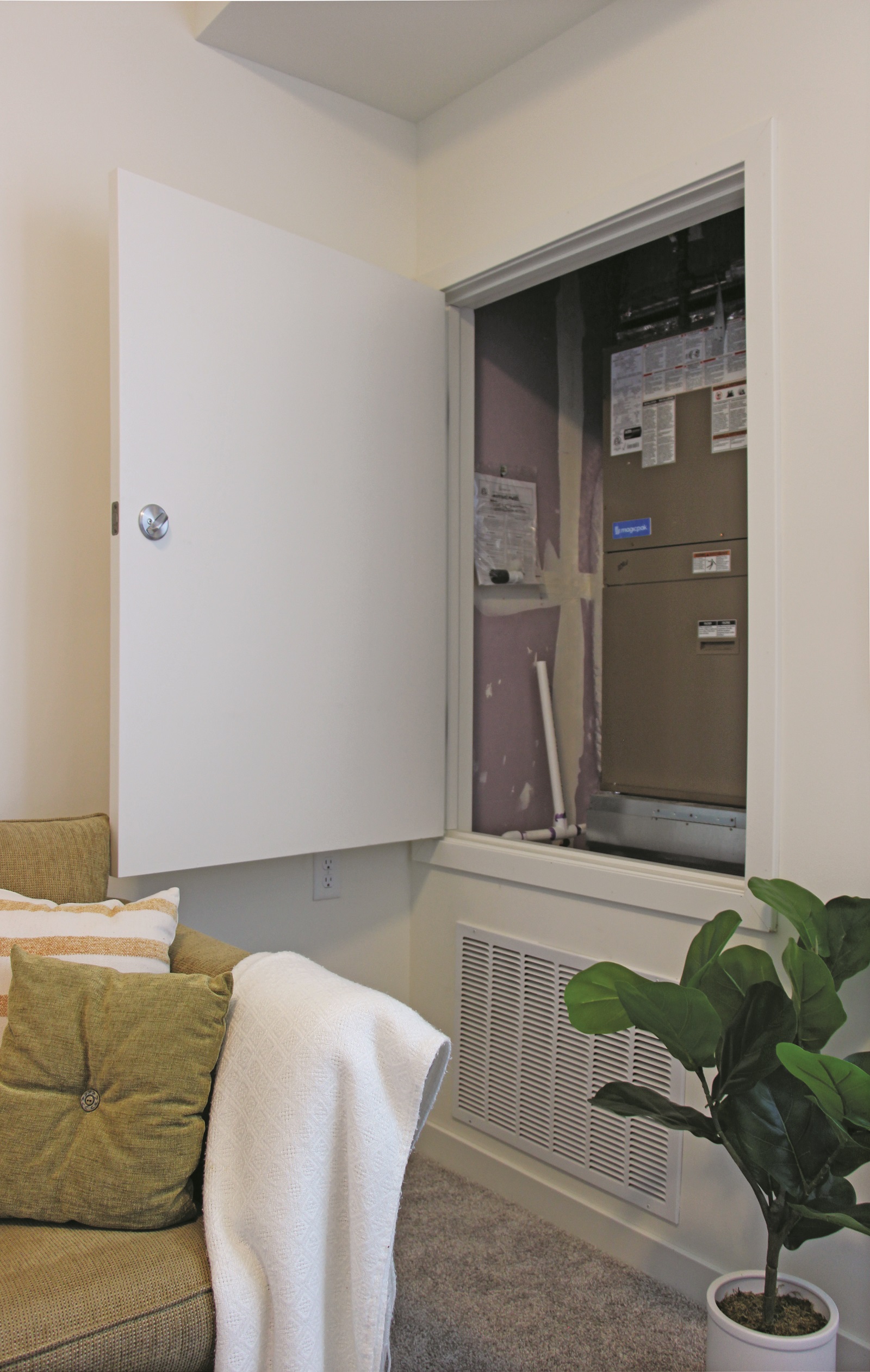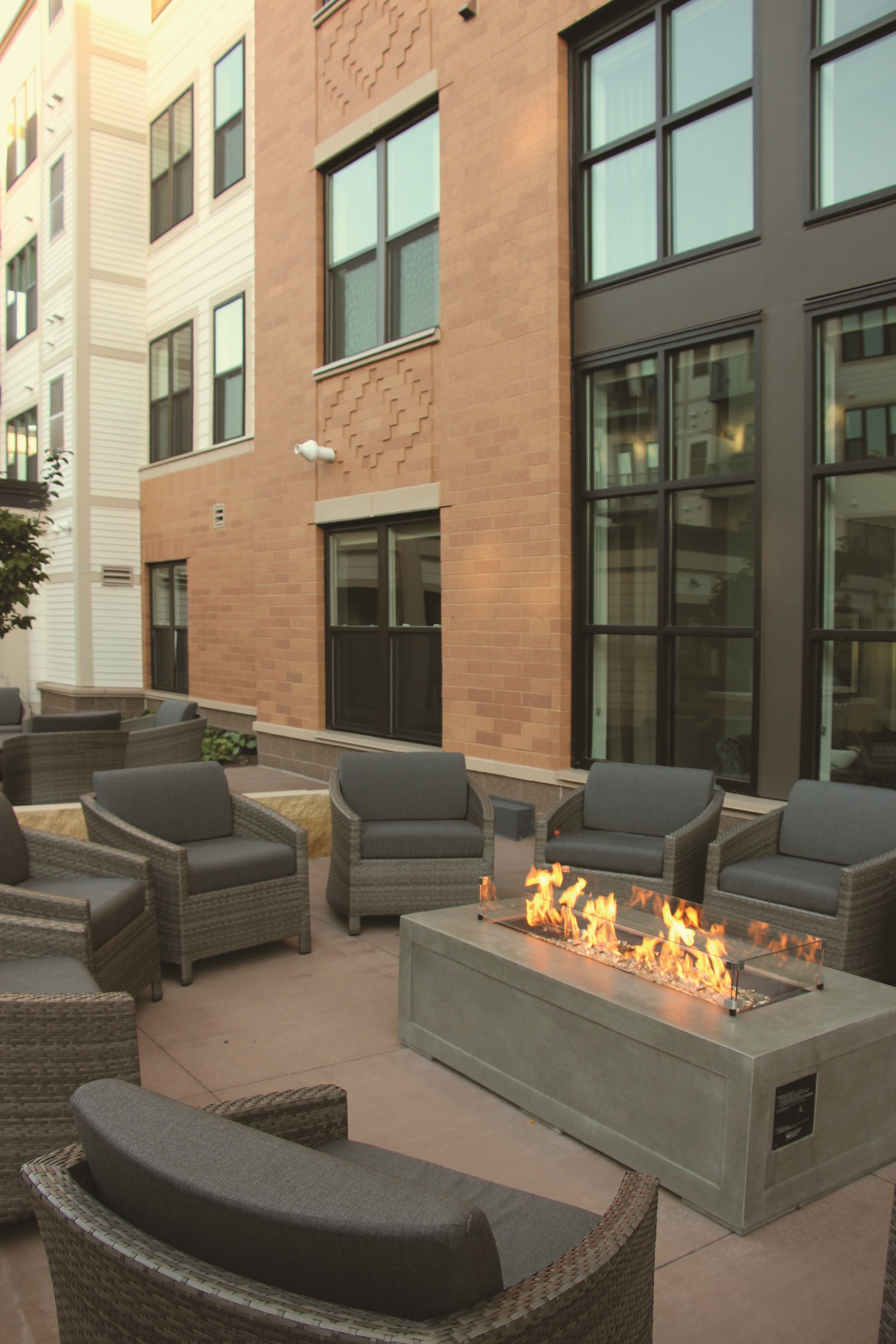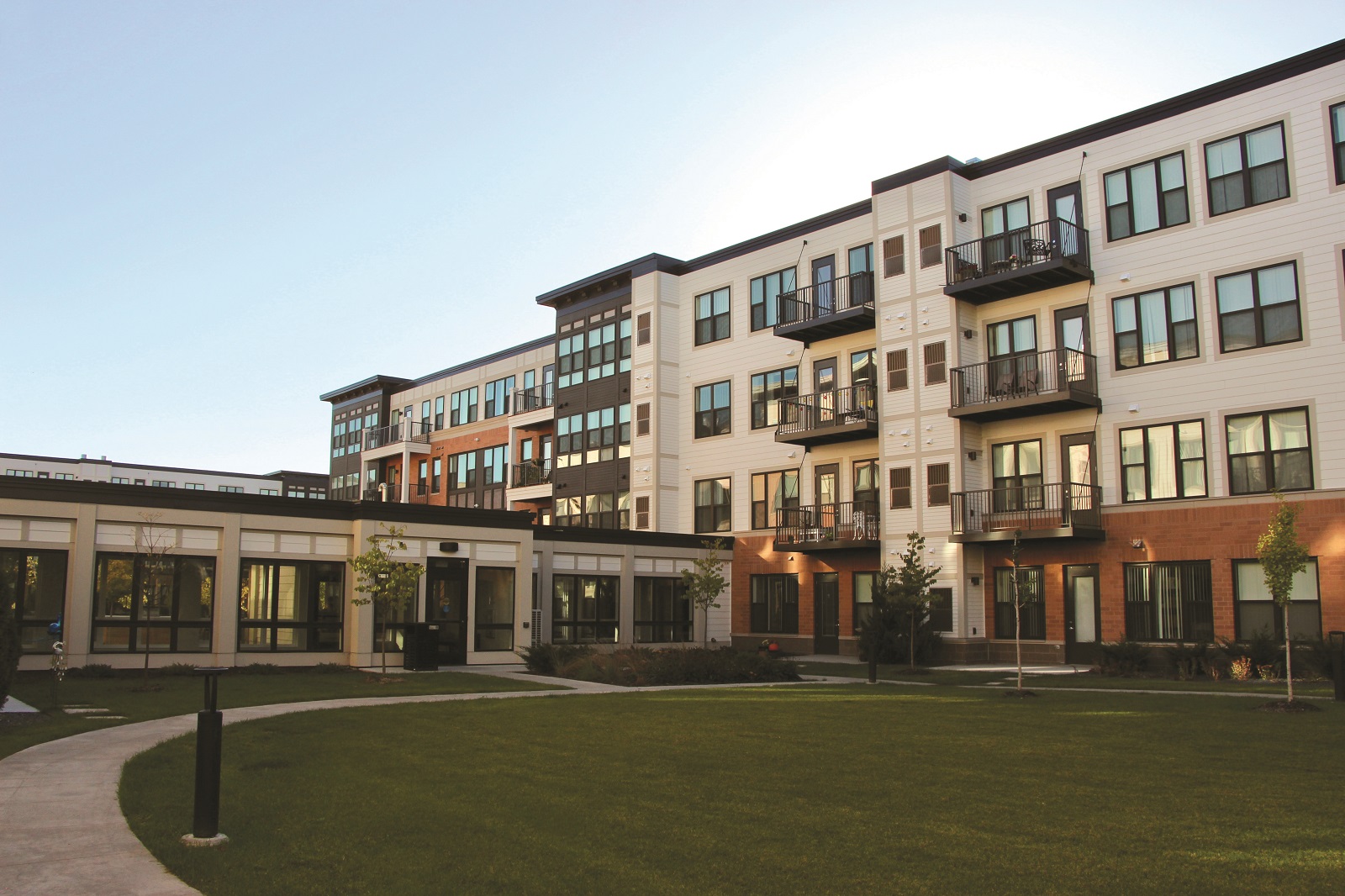When BKV Group was engaged to reimagine a former lumber processing site as a residential campus for active older adults, the objectives were clear but lofty.
“The specific goals were, first and foremost, to be affordable and to start to heal the urban fabric. Effectively, to re-establish urban residential blocks within this larger parcel that had been industrial for at least 100 years,” said Aron Thomas, a senior project architect at BKV.
The project was the Legends at Berry active adult housing complex in St. Paul, Minnesota. The client was Dominium, one of the nation’s largest developers, owners and managers of affordable housing. The challenge for BKV would be managing the transformation of this forgotten industrial site into a welcoming residential campus while keeping an extra keen eye on costs.
A critical part of the solution on both counts came in the form of a single, simple choice: MagicPak All-in-One® HVAC systems.
Meet High-Performance Standards, Simply
Not only would the complex need to be cost-effective to build, but the solutions would need to keep rent and utilities within reach—even through brutal Minnesota winters.
Navigating a labyrinth of regulations and stakeholders is nothing new for urban multifamily projects. Local funding incentives were available through the City of St. Paul and HUD, but to qualify, they needed to prove the building would meet Minnesota’s B3 energy standard.
Alex Sawka, Director of Mechanical Engineering and Associate Partner at BKV, and the project’s Engineer of Record, turned to a familiar solution—the MagicPak All-in-One HVAC system.
“There’s a lot of benefits to a MagicPak unit,” said Sawka. “The design is really flexible. There’s a top supply and a bottom return configuration, which helps our architects with where they can place the unit in the apartment. There are options with standard and high efficiency gas and electric, so we’re able to choose which is best for the project.”
Senior project architect Aron Thomas points out that having MagicPak® as a standardized solution helps streamline the design process. “We always know where duct work needs to go. We always know how they’re going to operate. We know that we usually use them in three different sizes based on our bedroom counts and our unit square footages. It is very convenient for us to be able to design around a product that delivers consistent value that way.”
For the Legends at Berry, having a MagicPak high-efficiency gas heat option was critical. Specifying the MagicPak V-Series™ high-efficiency heating and cooling units enabled the project to meet Minnesota’s B3 energy standard. As a result, the project not only received critical financial support, but the building owners and residents will reap the ongoing benefits of smarter energy use and reduced operating costs.
Residents will benefit from the way high-efficiency MagicPak units help make Minnesota’s harsh winters and hot summers more comfortable and less costly. Meanwhile, building owners appreciate that the system makes maintenance more manageable with easy access to serviceable parts.

“In Minnesota it’s negative 15 degrees. They don’t have to go up there [on the roof] and do service on a unit. All the components are accessible through somebody’s apartment, which is a huge plus,” said Sawka.
There’s also less centralized equipment and pipes, noted Sawka, which makes his job significantly easier. “We don’t have to locate a chiller. There’s no cooling tower, there’s no central core water loop piping to deal with. It’s all self-contained in the unit. And that’s a huge, huge advantage.”
An Inviting Residential Aesthetic
In addition to its many pragmatic benefits for developers, owners and residents, a MagicPak system offers architects numerous advantages in achieving their aesthetic vision for the project. Most notably, there’s no need for a condenser farm on the roof or in the yard. Instead, the MagicPak All-in-One units are housed discreetly within each living space.
At the Legends at Berry, a pattern of regular bump-outs along the exterior accommodates the mechanical closets for each unit without inching into living space, while also creating a homier-looking façade.
“The MagicPak on the outside of the building also allows us to establish a rhythm that calls a spade a spade. This is multifamily housing. When you look at the outside of the building, you can see how it’s laid out in that regard and that becomes sort of a driving factor in the aesthetics of the building,” said Thomas.
Thomas appreciates that with MagicPak, a building’s HVAC components “can be sort of seamless with the architecture.” The louvers can be color-matched to blend with nearly any exterior color or cladding.

“I appreciate that it doesn’t look like a hotel. We don’t have a large grille underneath an oversized window. There’s not a big clunky unit on the inside that someone has to look at all the time. It doesn’t require the same kind of wall opening. So, I think it does free up our exteriors by using this product.”
--
Contact Information
Phone: 1-800-448-5872
Email: MagicPakMarketing@alliedair.com
Website: www.magicpak.com
Related Stories
| Mar 17, 2011
Hospitality industry turns to HTS Texas for ‘do not disturb’ air conditioned comfort
Large resort hotels and hospitality properties throughout the Southwest have been working with local contractors, engineers and HTS Texas for the latest innovations in quiet heating, ventilating and air conditioning (HVAC) equipment. The company has completed 12+ projects throughout Texas and the Southwestern U.S. over the past 18 to 24 months, and is currently working on six more hotel projects throughout the region.
| Mar 2, 2011
New ASHRAE standard may be too broad for the Canadian market
New Standard 189.1 from the American Society of Heating, Refrigeration, and Air-conditioning Engineers (ASHRAE), which goes beyond energy efficiency to include provisions that affect construction, post-occupancy monitoring, and site control, may be too much for the Canadian market—at least for now.
| Feb 22, 2011
Military tests show copper increases HVAC efficiency, reduces odors
Recent testing, which is being funded by the Department of Defense, is taking place in military barracks at Fort Jackson, South Carolina. Side-by-side comparisons demonstrate that air conditioning units made with copper suppress the growth of bacteria, mold, and mildew that cause odors and reduce system energy efficiency.
| Oct 12, 2010
Guardian Building, Detroit, Mich.
27th Annual Reconstruction Awards—Special Recognition. The relocation and consolidation of hundreds of employees from seven departments of Wayne County, Mich., into the historic Guardian Building in downtown Detroit is a refreshing tale of smart government planning and clever financial management that will benefit taxpayers in the economically distressed region for years to come.
| Oct 12, 2010
Gartner Auditorium, Cleveland Museum of Art
27th Annual Reconstruction Awards—Silver Award. Gartner Auditorium was originally designed by Marcel Breuer and completed, in 1971, as part of his Education Wing at the Cleveland Museum of Art. Despite that lofty provenance, the Gartner was never a perfect music venue.
| Oct 12, 2010
Cell and Genome Sciences Building, Farmington, Conn.
27th Annual Reconstruction Awards—Silver Award. Administrators at the University of Connecticut Health Center in Farmington didn’t think much of the 1970s building they planned to turn into the school’s Cell and Genome Sciences Building. It’s not that the former toxicology research facility was in such terrible shape, but the 117,800-sf structure had almost no windows and its interior was dark and chopped up.
| Oct 12, 2010
Full Steam Ahead for Sustainable Power Plant
An innovative restoration turns a historic but inoperable coal-burning steam plant into a modern, energy-efficient marvel at Duke University.
| Oct 8, 2010
Union Bank’S San Diego HQ awarded LEED Gold
Union Bank’s San Diego headquarters building located at 530 B Street has been awarded LEED Gold certification from the Green Building Certification Institute under the standards established by the U.S. Green Building Council. Gold status was awarded to six buildings across the United States in the most recent certification and Union Bank’s San Diego headquarters building is one of only two in California.
| Sep 16, 2010
Green recreation/wellness center targets physical, environmental health
The 151,000-sf recreation and wellness center at California State University’s Sacramento campus, called the WELL (for “wellness, education, leisure, lifestyle”), has a fitness center, café, indoor track, gymnasium, racquetball courts, educational and counseling space, the largest rock climbing wall in the CSU system.












